Corsair’s HXi line got stronger with the HX1500i, which uses a semi-digital CWT platform, offering tons of power and high performance. With a 400 bucks price-tag, this is among the most expensive PSUs on today’s market and one of the few ones also, that are supported by software (iCUE) for monitoring and controlling of some vital functions.
Corsair stepped up its game by releasing the HX1000i and HX1500i units. Usually, I should be among the first to post their reviews, but a mixed up in sampling and a heavy work overload in the lab led to a late review. But better late than never, and after all, product reviews are not a sprint, but a marathon, especially for PSUs which have a much longer shelf life than other IT products. This is why I don’t care much whether I will be the first to post a review, but I do care to have the most accurate and detailed review possible.
The HX1500i uses a modified CWT platform with the code name CST. Corsair spent a year modifying and tuning the design to increase performance and reliability to the desired levels. I remember this period since several HXi units passed from the lab. The primary thing in the HXi units is the semi-digital platform, allowing control and monitoring of the PSU through the iCUE software. The added benefit of digital controllers is that they can “talk” to the system, allowing for several functions.
In the HX1500i’s case, through iCUE, you can toggle single rail or multi rail mode, control the fan speed and monitor the PSU’s performance. I am not a big fan of iCUE, mainly because it is a bit complicated since it supports a wide range of Corsair products, but the fact is that it offers lots of options. You need to get used to this software to use it efficiently.
- Manufacturer (OEM): CWT
- Max Power: 1500W
- Cybenetics Efficiency: [115V] Platinum (89-91%) [230V] Platinum (91-93%)
- 80 Plus Efficiency: Platinum
- Noise: Cybenetics A- (25 – 30 dBA)
- Compliance: ATX12V v2.53, EPS 2.92
- Alternative Low Power Mode support: Yes
- Power 12V: 1500W
- Power 5V + 3.3v: 150W
- Power 5VSB: 17.5W
- Cooling: 140 mm Fluid Dynamic Bearing Fan (NR140P)
- Semi-Passive Operation: Yes
- Modular Design: Yes (Fully)
- High Power Connectors: 3x EPS (3x cables), 9x PCIe 6+2 pin (6x cables)
- Peripheral Connectors: 16x SATA (4x cables), 8x 4-pin Molex (2x cables)
- ATX/EPS Cable Length: 610/650mm
- Distance between SATA connectors: 115mm
- Distance between 4-pin Molex connectors: 100mm
- In-cable capacitors: No
- Dimensions (W x H x D): 150 mm x 85 mm x 200 mm
- Weight: 2.44 kg (5.38 lb)
- Warranty: 10 years
Box & Bundle
The box is large since it has to accommodate a PSU measuring 200mm in length. The protection inside the package is adequate, with packing foam covering the PSU’s edges.
Product Photos
The first thing that leaves an impression is the non-restrictive fan grille. The PSU’s dimensions follow. On the front side, the exhaust grille is restrictive to prevent increased radiated EMI. On the back side, we find a load of connectors, a Type-C socket, and an LED above it. There is a notice that this PSU is designed for use only with Corsair Type-4 cables.
Cables
The amount of cables that you will get with this PSU is immense. Unfortunately, 12VHPWR cables are not included.
Protection Features
|
OCP (Cold @ 26°C) |
12V: 154.2A (123.36%), 11.906V |
|
OCP (Hot @ 45°C) |
12V: 154A (123.2%), 11.907V |
|
OPP (Cold @ 30°C) |
1835.91W (122.39%) |
|
OPP (Hot @ 40°C) |
1833.63W (122.24%) |
|
OTP |
✓ (107°C @ 12V Heat Sink) |
|
SCP |
12V to Earth: ✓ |
|
PWR_OK |
Proper operation |
|
NLO |
✓ |
|
SIP |
Surge: MOV |
OCP is conservatively set at 12V, and the same goes for OPP. On the contrary, OCP is set high on the minor rails. The rest protection features are present and working ok.
Part Analysis
| General Data | |
| Manufacturer (OEM) | CWT |
| PCB Type | Double Sided |
| Primary Side | |
| Transient Filter | 6x Y caps, 3x X caps, 2x CM chokes, 1x MOV, 1x MPS HF81 (Discharge IC) |
| Inrush Protection | 2x NTC Thermistor SCK-075 (7 Ohm) & Relay |
| Bridge Rectifier(s) |
2x VISHAY LVB2560 (600V, 25A @ 105°C)
|
| APFC MOSFETs |
2x Infineon IPW60R099P6 (600V, 24A @ 100°C, Rds(on): 0.099Ohm)
|
| APFC Boost Diode |
2x CREE C3D10060A (600V, 10A @ 153°C)
|
| Bulk Cap(s) | |
| Main Switchers |
4x Vishay SiHA105N60EF (600V, 8A @ 100°C, Rds(on): 0.102Ohm)
|
| Digital Controllers | 2x Texas Instruments UCD3138A |
| MCU | Microchip PIC32MM0064GPM036 |
| Topology |
Primary side: Semi-Digital, Interleaved PFC, Full-Bridge & LLC converter
Secondary side: Synchronous Rectification & DC-DC converters |
| Secondary Side | |
| +12V MOSFETs | 12x Vishay SiR626DP (60V, 100A @ 70°C, Rds(on): 1.7mOhm) |
| 5V & 3.3V | DC-DC Converter FETs: 8x PWM Controller(s): 1x |
| Filtering Capacitors | Electrolytic: 2x Nippon Chemi-Con (105°C, W), 7x Nippon Chemi-Con (4-10,000h @ 105°C, KY), 3x Rubycon (4-10,000h @ 105°C, YXF), 1x Rubycon (4-10,000h @ 105°C, YXJ) Polymer: 19x United Chemi-Con, 28x FPCAP |
| Supervisor IC | Weltrend WT7502R (OVP, UVP, SCP, PG) |
| Fan Controller | Microchip PIC32MM0064GPM036 |
| Fan Model | Corsair NR140P (140mm, 12V, 0.22A, Fluid Dynamic Bearing Fan) |
| 5VSB Circuit | |
| Rectifier |
1x IPS ISD04N65A FET & 1x D10S45L SBR (45V, 10A)
|
| Standby PWM Controller | On Bright OB5282CP |
This is a heavily modified CWT CST platform. Corsair has an R&D team, so it doesn’t just get an OEM platform and relabel it. A group of people is working hard to deliver the best possible performance from platforms that the OEMs are not allowed to provide to other brands. This is more expensive, of course, but it is one of the main reasons behind Corsair’s dominance in the PSU market.
The build quality is high, and quality parts were used, including Infineon and Vishay FETs, along with Texas Instruments controllers. There is also a Microchip MCU. Moreover, the platform is modern and semi-digital, meaning that the digital controllers handle the entire primary side and a part of the secondary. The only circuits that use analog controllers are the VRMs for the minor rails and the 5VSB circuit.
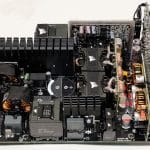
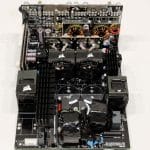
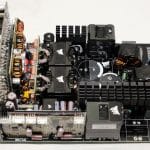
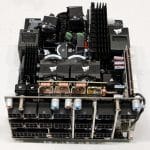
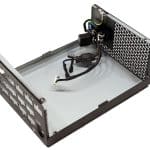
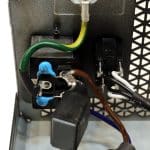
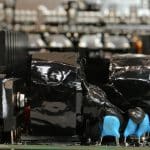
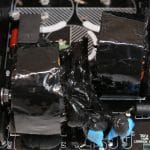
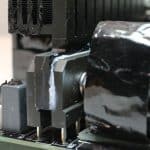
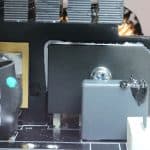
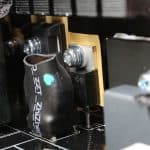


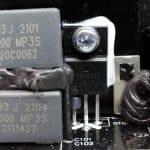
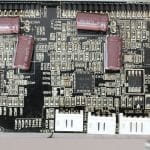
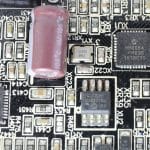
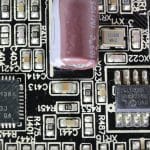
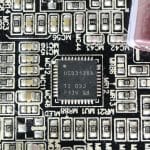
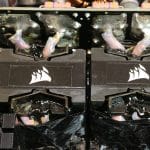

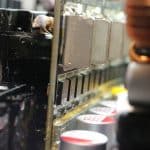




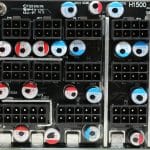

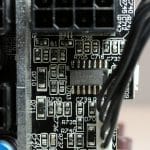

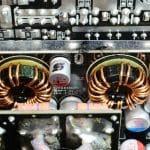
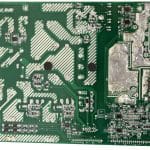
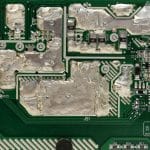
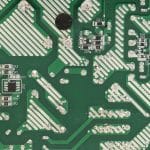

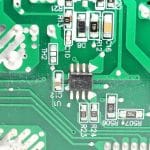

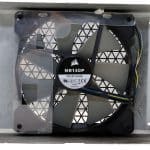
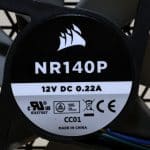
Load Regulation
I expected tighter load regulation at 12V.
Ripple Suppression
Ripple is low on all rails, without extra in-cable caps, making cable routing and management daunting tasks.
Transient Response
Transient response is within 1% at 12V, which is good, but the competition fares better.
Hold Up Time
The hold-up time is long enough, and the power ok signal is accurate
Timings
The PSU supports Alternative Low Power Modes!
Inrush Current
Inrush current is low with 115V but pretty high with 230V.
Efficiency Normal, Light & Super-Light Loads
The HX1500i is efficient with normal and ultra-light loads. I want a bit higher efficiency in the 20-80W load range, though.
Average Efficiency 5VSB
The 5VSB rail is highly efficient.
Vampire Power
Vampire power is dead low!
Average Efficiency
The average efficiency is at the proper levels for a Platinum-rated unit.
Average PF
The APFC converter needs tuning to deliver higher PF readings with 230V input.
Average Noise
The average fan’s noise is kept low.
Fan Noise & Speed Maps @ 28-32 °C
The load on the minor rails affects overall noise output, but on the other hand, this unit has powerful minor rails, so most likely, you will never have to push them at the max. Up to around 860W load, noise is inaudible. You will have to reach 100W for noise to exceed 30 dbA; with more than 1200W, you enter the 35 dBA zone.
Overall Performance
Overall performance is good, but I would like to see the HX1500i closer to the Toughpower TF1. The latter is Titanium-rated, but it costs less than the HX1500i.
Epilogue
The HX1500i has top build quality and will cope with heavy abuse without sweating. This is a power supply for demanding gaming systems; the digital interface and the ability to control and monitor it through the iCUE software is an interesting feature. I am not a big fan of iCUE since I find it challenging to use, but the fact is that it provides lots of options. This is the problem, too many options, so things go south quickly.
I expected higher performance from the HX1500i. I have a second sample which I plan to fully evaluate and check if I have any performance difference with this one. Not that its performance is not satisfactory, but for 400 dollars, I would like it to see going closer or even above the Thermaltake ToughPower TF1-1550, which has a similar price tag. Another issue is the lack of 12VHPWR connectors, but I guess, like many brands, Corsair will provide these cables to the owners of this PSU once it has them available, and the new GPUs that require them are out on the market.
Buy be quiet! Dark Power Pro 12 1500W
- Full power at 47°C
- Powerful
- Top build quality
- Tons of connectors provided
- Silent operation
- Efficient 5VSB rail
- Good ripple suppression
- Long hold-up time
- Accurate power ok signal
- OCP at 12V and OPP are set correctly
- iCUE software provides lots of options
- Low inrush current with 115V input
- Dead low vampire power
- Quality, FDB fan
- 10-year warranty
- Expensive
- PF with 230V could be higher
- Overall performance needs a small boost
- High OCP on the minor rails
- High inrush current with 230V input
- The short distance between all peripheral connectors
- No 12VHPWR connectors
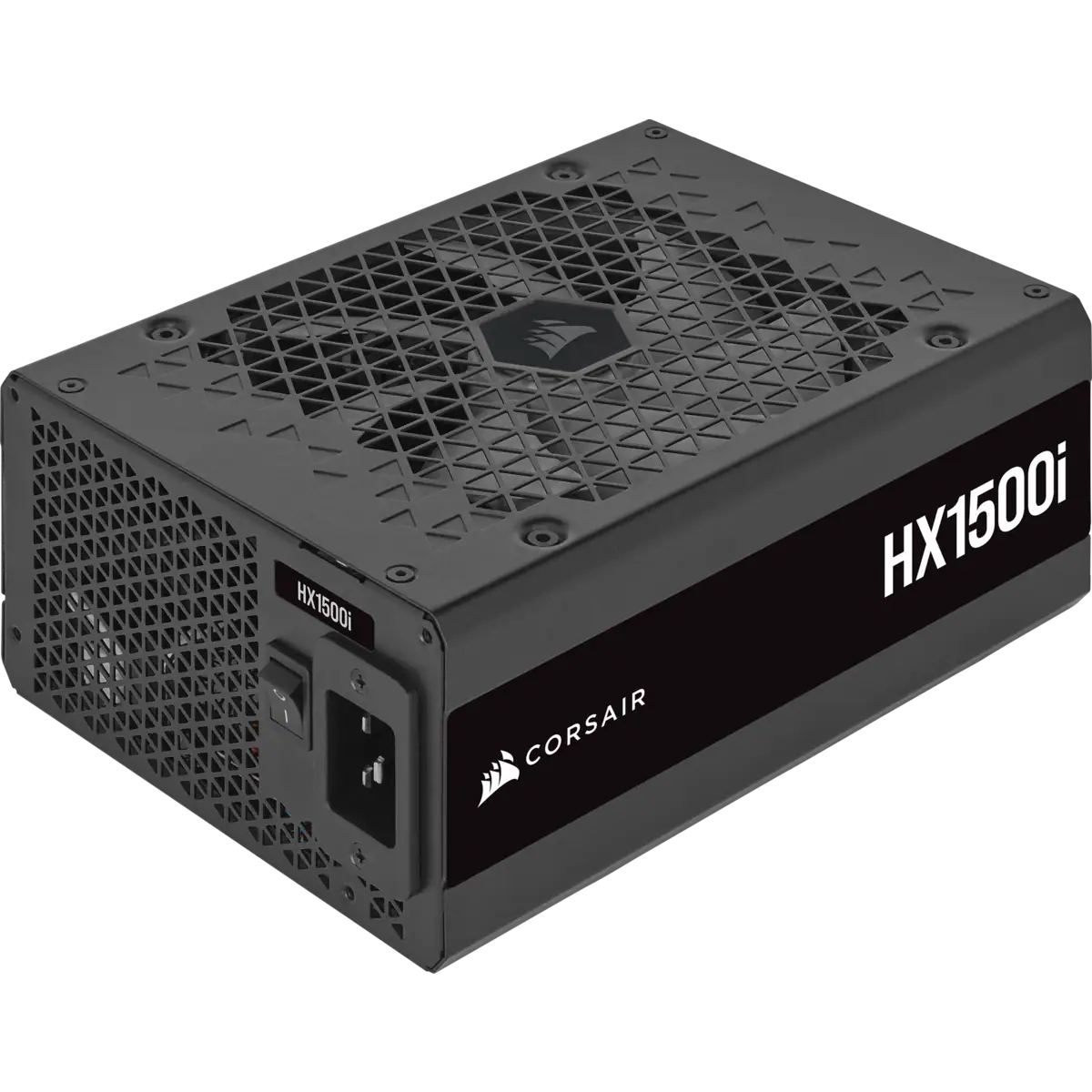
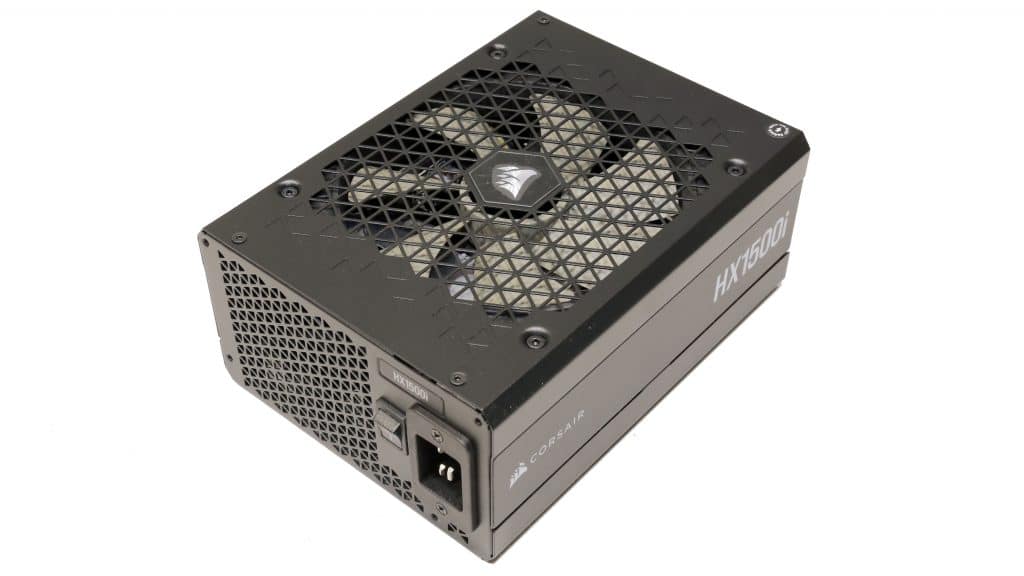

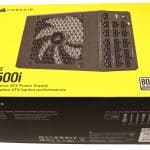
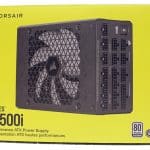
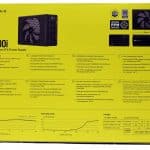
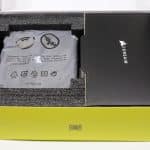
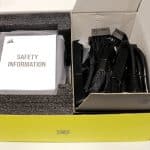


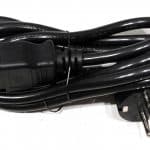
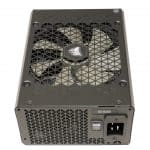
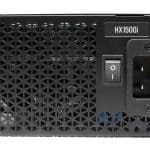

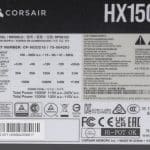
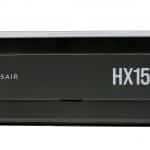
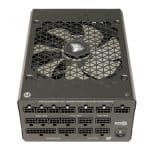

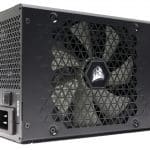
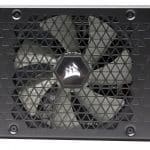
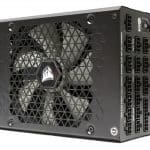

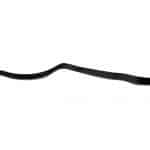
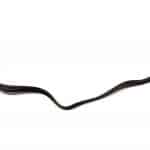
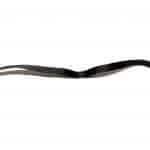
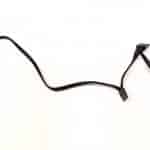
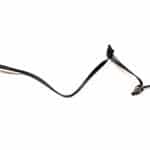
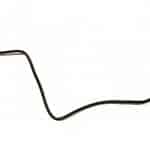
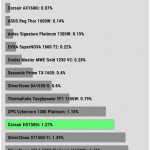
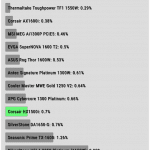
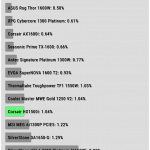
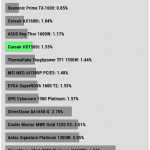
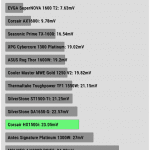
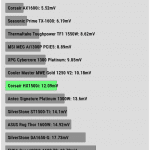
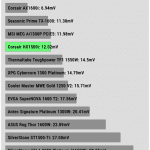
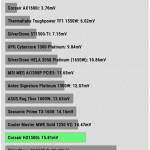
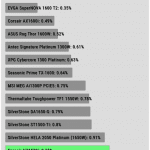
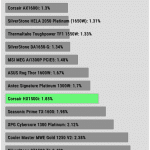
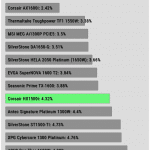
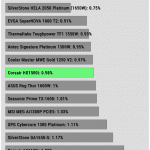
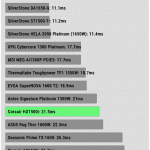
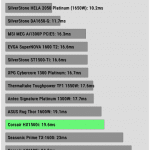
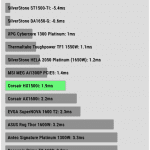
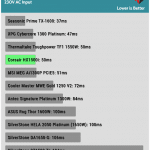
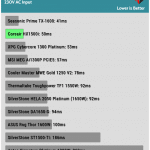
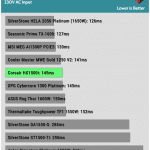
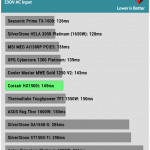
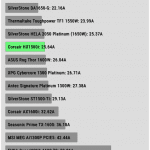
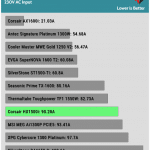

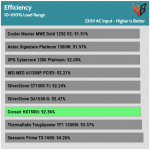
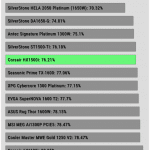

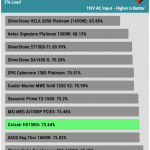

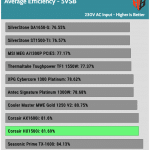
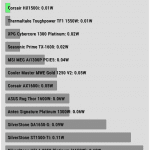
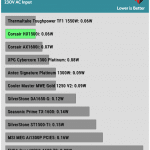

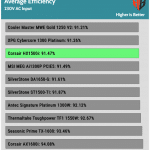
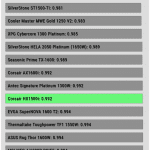
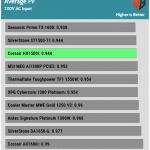
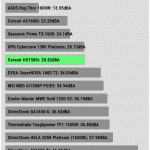
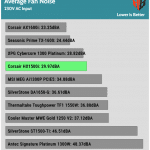
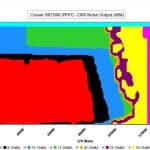
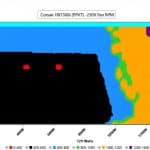
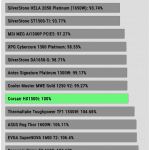
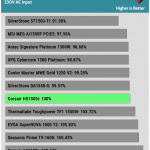
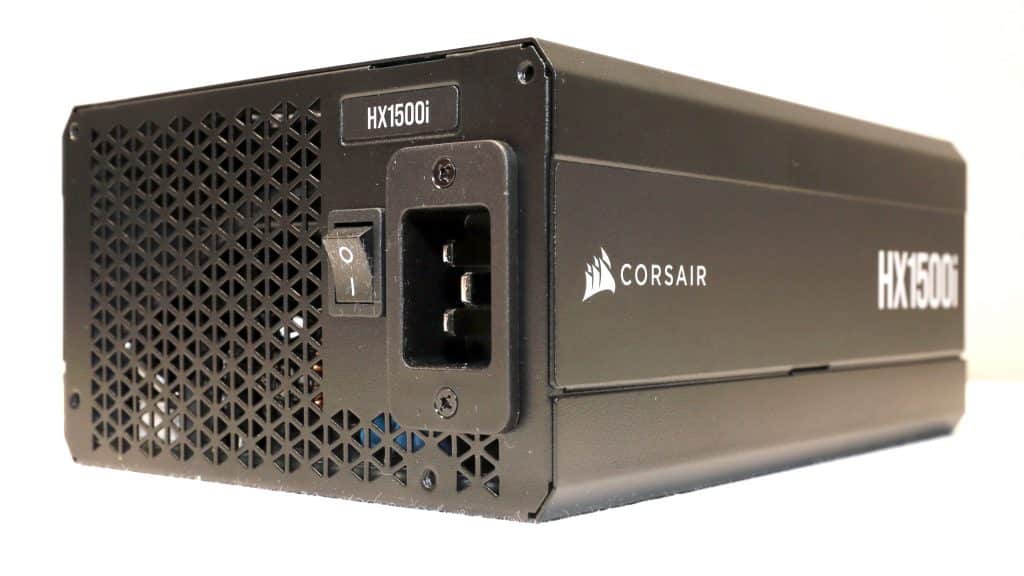


Hi! how are you?
Im planning on buying this PSU vs the hx1200i, on amazon it is on 279 USD (less than the Hx1200i), my biggest worry is the high inrush current on the 230V, but… in my country our connectors are 110V at 60hz, will It perform good? Will I have a high inrush current? is it good for my device? I have a 9800x3d and a 5070i, planning on upgrading in the long long future.
Hi! We will soon change our inrush testing equipment because it seems it is too sensitive.
Eu comprei uma, e fiz um teste com o jumper no fio ATX 24 pinos, e quando ligo a chave, o LED ascende e apaga rapidamente na cor vermelha, Vocês sabem se isto e um sinal de falha por falta de carga ou algum defeito na fonte? Quando desligo a chave, este LED também acende e apaga rapidamente
Hello, do we know if the hx1500i (2023) has any defects? I’ve changed 2 power supplies and the 3rd one that Corsair sent to me shows exactly the same problem as the previous ones. The problem that all 3 hx1500i (2023) CP-9020261-EU have given me is that after many hours once I open the power supply switch, the computer does not post (the motherboard led lights up normally) and to post I have to close and open the switch again. Only on the 2nd try it posts and the computer boots. On the 2 previous power supplies I had tried paper clip test and both did not boot the 1st time (fan would not spin). Only the 2nd time did the fan spin after I had turned the power supply switch off and on.I have also mentioned the problem I am experiencing in the Corsair support.I also want to mention that this problem was not there from the beginning, it appeared after some time, for example 1-2 months later. In addition, I have the habit of often turning off the power switch as soon as I shut down the computer.
Hm this looks weird. I will forward this to the Corsair Engineering team.
Is there a reason you have a habit of switching off the mains switch on and off all of the time?
Given that’s the one characteristic you do that 99% of others don’t, I would focus on the inrush current protection preventing the PC from turning on.
I would advice to only use the main switch in the back of the PSU for cutting power to the inside of the PSU while working in it (i.e. swapping RAM, etc.)
Is the OCP test done in multi rail mode too. I’m curious about the results because I have not seen any positive 12v OCP test on a ATX3.x 12v multi rail PSU so far. 12v multi rail seems hard to implement in the ATX3.x specs.
we only did it in single-rail mode. Only if the PSU doesn’t have a single 12V rail mode, we proceed with multi-rail testing, since it requires lots of time and patience.
With a $280 USD price for the PCI 3.0 version, does that change your overall opinion on value here?
Or do you think there are still better options to be had?
I AM an active iCue user and happy with it, if that matters.
you mean ATX v3.1 version? Look it is a digital PSU so from design it is supposed to be expensive 🙂 But 280 dollars I think its lower than it used to be.
Thanks for the quick reply!
Yeah, I meant ATX 3.0.
Big sale on Amazon I guess.
I’d be upgrading from a Silverstone Prime 1000w that I’ve owned for nearly 10 years now.
My current psu is fine, but I have a 4080 super and the 12 vhwpr adapter won’t let me put my door on my case. (Evo D XL)
My two options are to mount the GPU sideways which requires the mount purchase, or change my PSU to one that natively supports 12vhpwr.
I am trying to consider if it’s worth grabbing it now, with the expectation that GPU power draw is going to continue to increase and I’m going to eventually HAVE to upgrade.
If you were me, would you just get the GPU mount (then buy the best PSU option if/when it dies) or go ahead and buy this while on sale?
I suppose such a sale could be an indicator that a new version is on the horizon, eh?!
for me get a PSU with a native connector. Do not use adapters. Also ten-year PSU, you better change it. As for the last part, yes something like that 🙂
……. Do you have a review sample….or something like that?
Review sample? Sorry I don’t know what you mean.
A version of the new model they send to reviewers to test = review sample
What’s the actual difference from this and the new ATX 3.0 version? Some say it’s only the 12VHPWR cable?
This and the hold-up time
Awesome sir. The only review and reviewer to actually state the difference between corsair hxi1500 and the newer hxi1500 atx 3.0
Is the reason of not being atx 3.0 not containing 12vhpwr cables? If not, wat prevents it to get atx 3 certificate?
If it is not explained, can you compare atx 3 requirment with its specs to answer my question please?
It doesn’t support up to 200% transient loads.
thank you very much sir 🙂
how much does it do ? is it 170% or 150?
even if it is %170 its transient load would be higher then Rmx1200, so better then rmx1200’s ATX3 capability
Apart from silly, is it “okay” to use it on a system that won’t use too many watts all the time? I see it can provide “1500W”, so what about a system that is idling around… 100-150W? Or even less? Even a 4090, on idle, isn’t using too much power. How healthy is this for a monster of power like this? It’s like using it at its lows, 80% of the time, when not gaming.
For noise/fan rpm graphs, up to 800w it says <6db but in rpm graph it says 400-600rpm. So it's not 0rpm operation, just too low to detect?
The graphs are ok, it is just that the fan stays below 6 dBA at such low speeds.
youve linked to the wrong cybenetics report
thank you! Will fix it 🙂